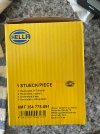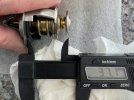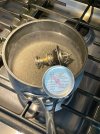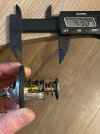This morning, was going to drive out to the desert to go hiking with friends... My L300 had been sitting for days, and had not noticed any issues. She started up just fine in the cool 50F degree morning, and I began to drive. Within 10-12 minutes, I was already at 210F+ and climbing. Since, I was meeting friends in 10 more miles, I kept an eye on things and kept the temperature below 230F. Stopping at the gas station, I checked my overflow, and it had green radiator fluid in it, was not blowing white smoke... I did a visual inspection of my fan and it was spinning quickly. Confused, I added some water to the overflow tank to bring it up to the "MAX" level and then left my Delica at the Park & Ride. 6 hours later, I got back to the park and ride and checked things out...
- Radiator has healthy looking green fluid at the top of the fins
- Overflow tank has minimal fluid in the tank
- Fan coupling didn't feel "too" bad (have a replacement from https://delicapartsusa.com )
- No broken fan blades
- No leaks seen from the radiator
- No fins damaged or blocked
- Oil was dark and black
- Faulty thermostat, staying closed and causing the engine to heat up. Can pull the thermostat and do a water pan temperature test fairly easily...
- Faulty water pump, but not seized, since wouldn't that cause the fan to not spin?
- Air in the system, but it would have worked up to the radiator by now, IMHO...
- Something blocking the flow of coolant (somewhere) [thus a flush and fill can remediate]







